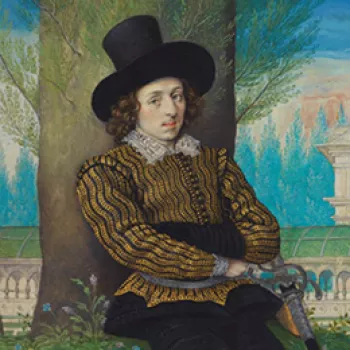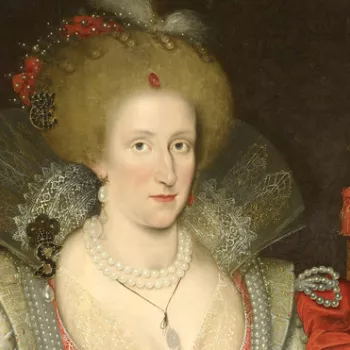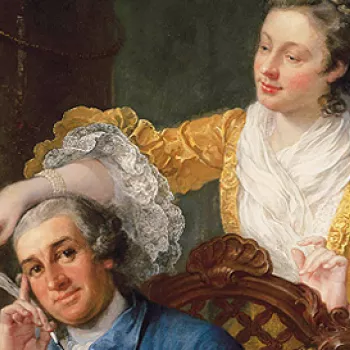A Young Man Seated Under a Tree c.1590-1595
Watercolour on vellum laid on card | 12.4 x 8.9 cm (support, canvas/panel/stretcher external) | RCIN 420639
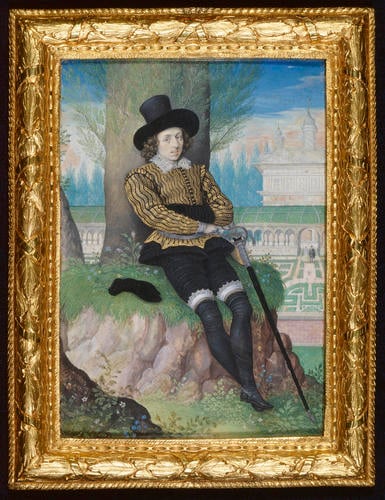
Isaac Oliver (c. 1565-1617)
A Young Man Seated Under a Tree c.1590-1595
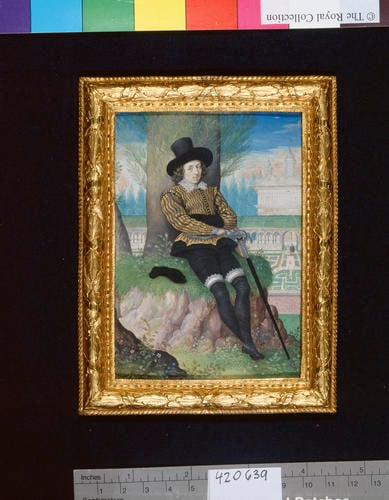
Isaac Oliver (c. 1565-1617)
A Young Man Seated Under a Tree c.1590-1595
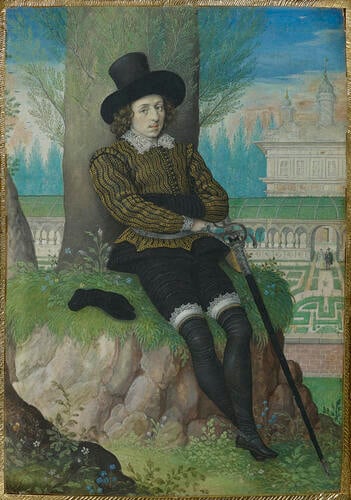
Isaac Oliver (c. 1565-1617)
A Young Man Seated Under a Tree c.1590-1595

Isaac Oliver (c. 1565-1617)
A Young Man Seated Under a Tree c.1590-1595
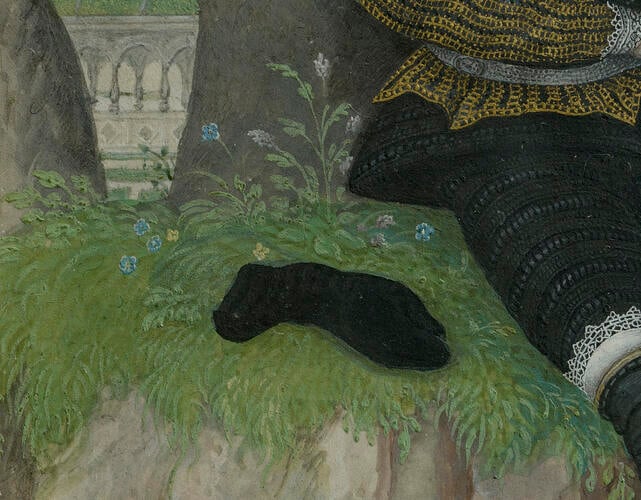
Isaac Oliver (c. 1565-1617)
A Young Man Seated Under a Tree c.1590-1595
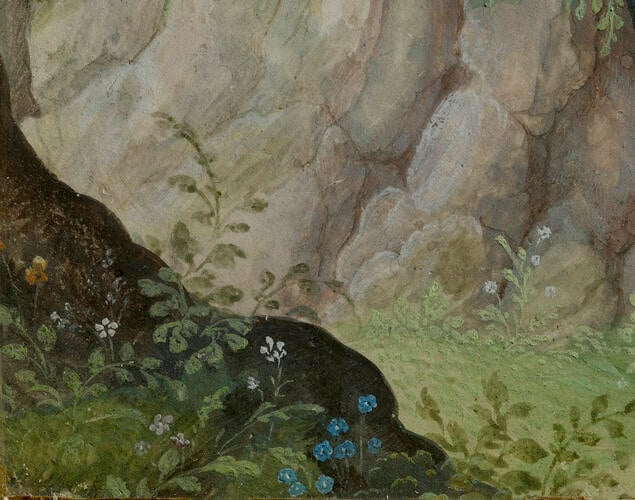
Isaac Oliver (c. 1565-1617)
A Young Man Seated Under a Tree c.1590-1595
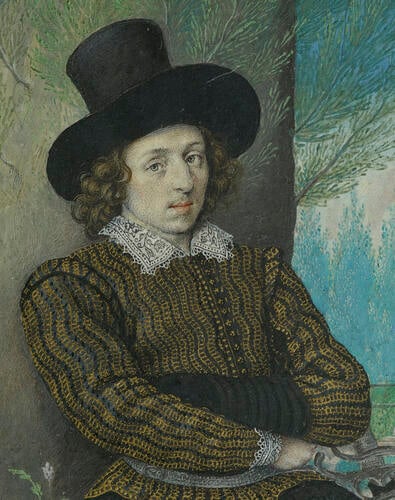
Isaac Oliver (c. 1565-1617)
A Young Man Seated Under a Tree c.1590-1595







-
One of the finest miniatures in Oliver's oeuvre and one of the most famous images in British art, Portrait of a Young Man reveals the artist elaborating on the full-length format first developed by Hilliard in the 1580s. The increased dimensions and the inclusion of the full-length figure extended the possibilities of the portrait miniature by allowing for the depiction of a detailed background and the introduction of a narrative element. Oliver always demonstrated particular skill in placing the figure in its setting and this miniature is in many respects comparable with Hilliard's Young Man Among Roses of c.1587 (London, Victoria and Albert Museum). Both miniatures have been variously interpreted, but in each case the identification of the sitter has remained elusive. The suggestion made by Horace Walpole in the eighteenth century that the youth may be identified with Sir Philip Sidney (1554-86), soldier, statesman and poet, at Wilton House in Wiltshire while composing his poem Arcadia, cannot be sustained.
It is now known that the background is based on an engraving in the architectural pattern book, Artis Perspectivae ... multigenis Fontibus Liber Primus, by Hans Vredeman de Vries (1568). Oliver has added to the narrative content by introducing two figures walking in the garden. The pattern book by Vredeman de Vries may not have been widely known to artists in late sixteenth-century Britain, but a copy apparently belonged to Marcus Gheeraedts the Elder - whose daughter, Sara, Oliver was to marry in 1602.
Apart from the identification of the figures and setting, Portrait of a Young Man has also been discussed in the context of the 'Elizabethan Malady', as analysed in Robert Burton's Anatomy of Melancholy (1621). Characterised as a state of mind associated with creativity that veered towards low spirits (or in today's parlance, depression) and the yearning for isolation, melancholy was much affected by the aristocracy. However, apart from the distant forlorn expression and the discarded glove, other attributes of melancholy such as dishevelment are not portrayed here, and for the moment the Portrait of a Young Man retains its mystery.
Signed on right IO (in monogram)
Adapted from Royal Treasures, A Golden Jubilee Celebration, London 2002Provenance
`Mr Correy', by c.1725; Dr Richard Mead; from whom bought by Frederick Prince of Wales, between 1745 and 1751
-
Creator(s)
-
Medium and techniques
Watercolour on vellum laid on card
Measurements
12.4 x 8.9 cm (support, canvas/panel/stretcher external)
14.6 x 11.1 cm (frame, external)
11.4 x 8.0 cm (sight)
Category
Object type(s)
Other number(s)
Alternative title(s)
Sir Philip Sidney (1554-1586), previously identified as




